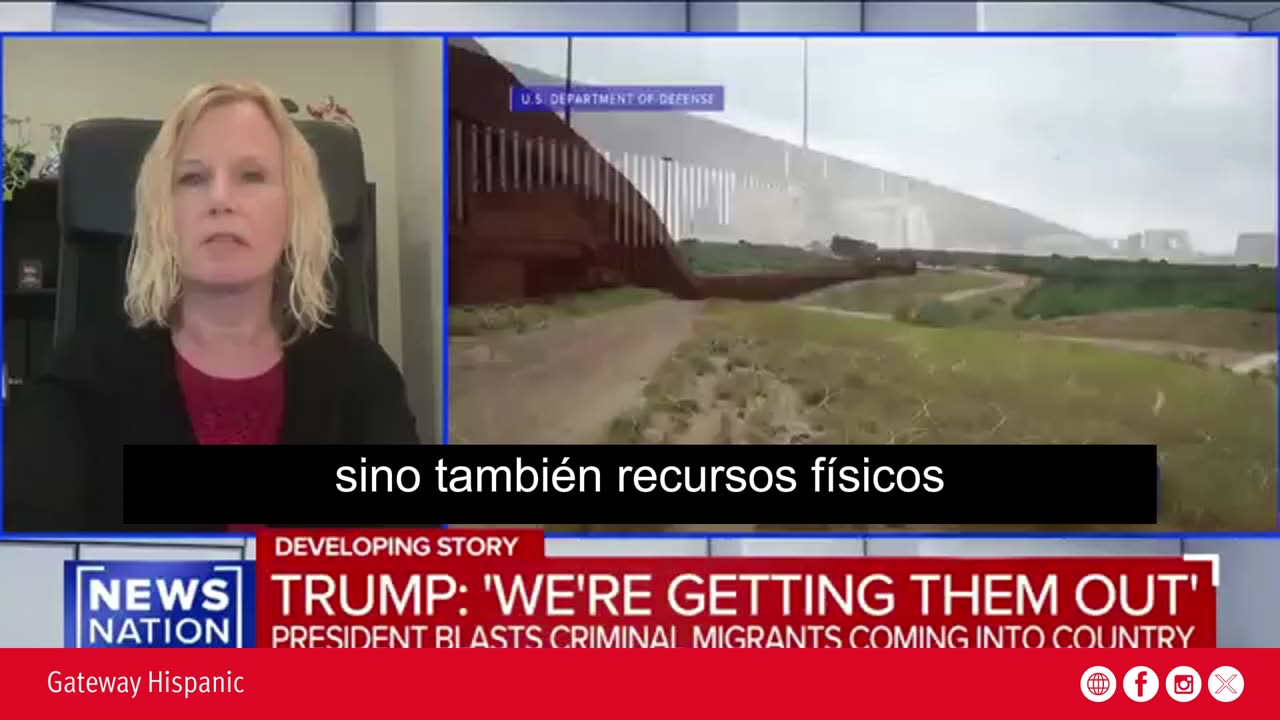Premium Only Content

Trump Strengthens the Border: Troops, Efficiency, and a Change of Course
With a decisive strategy and tactical use of the military, President Donald J. Trump has restored control over the U.S. southern border, in what many consider the most significant blow to illegal immigration in the country’s recent history. In contrast to the lax approach of the Biden administration, new figures reveal a historic drop in the number of inadmissible foreigners. This success—which has even baffled the harshest critics—is not solely due to administrative measures but to a direct intervention: troops at the border, investment in infrastructure, and firm diplomacy with the Mexican government.
Current data provided by U.S. Customs and Border Protection (CBP) leaves no room for doubt. Monthly figures for illegal entries have dropped so drastically that, under the Biden administration, the same numbers were recorded in just a single day. This is no coincidence. It’s the direct result of a comprehensive strategy led by a president who understands that without borders, there is no nation.
The Military as a Tool of Sovereignty
The decision to deploy the military to the border was not taken lightly. For years, national security experts had warned that militarization was the last resort after the failure of weak immigration policies. Trump understood that the time had come. And rather than hide behind progressive rhetoric or symbolic policies, he acted decisively.
The deployment of troops has not only strengthened critical entry points but also dismantled clandestine routes used by human traffickers and drug smugglers. The armed forces, working jointly with Border Patrol, have closed logistical and technological gaps previously exploited by cartels. Additionally, new barriers, sensors, surveillance drones, and reconnaissance towers have been installed—demonstrating how technology and force can work together for national security.
This is not simply about “militarizing” the border, as the most radical sectors of the left claim. It’s about protecting the American people, upholding the rule of law, and putting an end to years of abuse in which criminals, traffickers, and illegal migrants easily bypassed border controls.
Cooperation with Mexico: A New Chapter
Another essential component of today’s success is cooperation with the Mexican government. Unlike the passivity that characterized the Mexican executive during the Biden era, there is now a new willingness for dialogue and joint action. Under diplomatic pressure—and with a genuine offer of cooperation from the U.S.—Mexico has begun stepping up its actions against the cartels that operate with impunity on its territory.
Mexico’s request for U.S. help to directly target cartels marks a strategic shift. This collaboration not only benefits the U.S. in terms of reducing drug and human trafficking but also strengthens governance in Mexico—a country that has suffered for decades from violence and corruption fueled by organized crime. Trump, with his direct approach, has achieved what no previous administration could: putting a regional security strategy on the table with concrete results.
Moreover, Mexican authorities are receiving technological support and specialized training, which expands their capacity to act against criminal groups that once controlled migration routes. This also helps dissuade migrants at the source, showing them that the border is no longer an open door but an active line of defense.
The Difference Between Leadership and Weakness
What is happening today at the southern border reflects a fundamental difference between two visions of the country. While Biden and his team—guided by figures like Kamala Harris and Alejandro Mayorkas—pursued an open-border policy with no real consequences for lawbreakers, Trump has reinstated the basic principle that entering the U.S. illegally has consequences.
That firmness has been key to reducing the incentive for irregular migration. Thousands who would have once set out for the north are now reconsidering, knowing that the border is no longer symbolic—it is real. Illegal immigration hasn’t just been reduced; it has been successfully deterred.
Impact on Public Opinion
This change not only has immediate effects on national security, but also on public perception. A significant majority of U.S. citizens—including legal Latino voters—support an orderly, legal, and secure immigration policy. The claim that “Latinos are against Trump” has crumbled. The reality is that many legal immigrants are among the strongest supporters of border control policies. They, more than anyone, understand the value of doing things the right way.
In this context, Trump’s leadership is not just welcome—it is necessary. And not only in the U.S., but also in Latin America, where millions are tired of seeing their countries lose youth, talent, and stability due to a lack of opportunity. An orderly border allows for real alliances, joint projects, and long-term development.
Conclusion: A Policy That Defends the Nation
Donald J. Trump has made it clear that his commitment to national sovereignty is unwavering. By using the military as a tool for protection, demanding cooperation from Mexico, and reconfiguring the entire border security apparatus, he has proven that there is indeed an alternative to crisis.
Far from ideological speeches and the chaos that reigned during the previous administration, today the border once again stands as a symbol of defense—not collapse. And that change is the direct result of firm political will guided by one clear principle: the U.S. comes first.
-
 1:32:21
1:32:21
The Charlie Kirk Show
4 hours agoTHOUGHTCRIME Ep. 98 — The Comey Indictment? Antifa Agenda? Charlie and the Cubs?
88.1K49 -
 1:04:56
1:04:56
Sarah Westall
5 hours agoPolitical Assassinations, Targeted Hit Lists - Manufactured Chaos w/ Harley Schlanger
55.7K12 -
 1:11:31
1:11:31
Flyover Conservatives
11 hours agoThe “J Walker” Secret: One Daily Habit That Shifts an Entire City - Tammy Hotsenpiller | FOC Show
42.7K2 -
 2:12:02
2:12:02
Mally_Mouse
8 hours ago🎮Throwback Thursday! Let's Play: Wii Sports Resort!
38.1K2 -
 LIVE
LIVE
Akademiks
4 hours agoATLANTA IS BACK. Young Thug and YFN best buddies now. ATL backs Thug officially!
1,257 watching -
 5:40:35
5:40:35
Reolock
6 hours agoWoW Classic Hardcore | 3 LEVELS REMAIN
36.8K3 -
 3:00:23
3:00:23
Sgt Wilky Plays
5 hours agoThirst Trap Thursday | Regiment Donor Drive
31.2K -
 4:12:29
4:12:29
Fragniac
6 hours ago🔴 LIVE - FRAGNIAC - THE FINALS - IT'S ABOUT TO BE A MOVIE❗🎬📽 🎞
23.9K2 -
 1:39:44
1:39:44
Glenn Greenwald
7 hours agoJames Comey Indicted; TikTok and CBS Taken Over by IDF Funder Larry Ellison; Republicans Blame Rhetoric for Violence: Is "Stochastic Terrorism" Real? GOP Blocks Release of Epstein Files | SYSTEM UPDATE #521
143K81 -
 LIVE
LIVE
StevieTLIVE
5 hours agoThursday SOLO Warzone Domination | BDAY at Midnight
29 watching